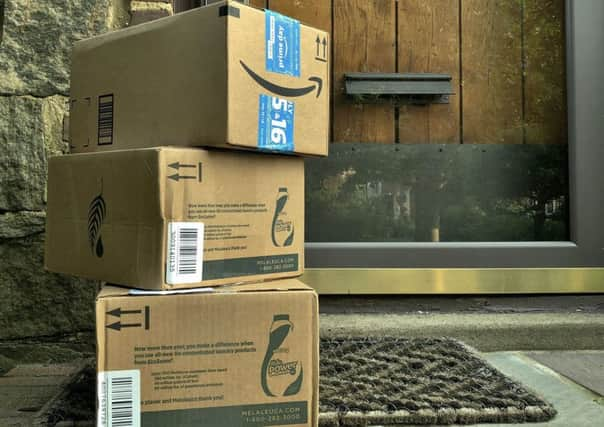Convenience of click and collect can bring high street back to life


As stores gear up for the busy Christmas shopping season, here’s a look at why the phenomenon is growing – as well as how it could boost the high street.
How popular is click and collect?
More than two-thirds (68 per cent) of shoppers are now choosing to pick up items bought online in store, according to Barclaycard, which commissioned surveys of consumers and retailers.
Advertisement
Hide AdAdvertisement
Hide AdEarlier this year analytics company GlobalData predicted that the UK click-and-collect market is set to grow to be worth nearly £10 billion by 2023.
The convenience of click and collect – when many people may be out at work and unable to take deliveries – is a strong part of its appeal for consumers. Over two-fifths (42 per cent) in Barclaycard’s research rely on these services because they’re out during the day. And one in six (15 per cent) favour it, as they cannot receive deliveries while at work.
How can click and collect help retailers?
One side-effect of the popularity of online shopping for retailers is the high numbers of returns – some of which may not be re-saleable.
Barclaycard found more than three-quarters (77 per cent) of retailers say providing click-and-collect services actually reduces the volume of returns. This saves stores the cost of processing refunds and re-stocking.
It can also have other positive benefits for stores. For example, when customers come in to collect, they may also look at what else is on the shelves. Barclaycard’s research found that 85 per cent of customers buy additional items when using click and collect.
What are retailers doing to meet demand?
Nine in ten (90 per cent) retailers are intending to invest in the service over the next five years.
Indeed, 87 per cent say click and collect is their fastest growing delivery option. And some retailers are innovating by clubbing together.
John Lewis launched a five-store click-and-collect trial with the Co-op in May, and has extended this to a further 50 Co-op locations. This trial follows a successful partnership with food store Booths.
Advertisement
Hide AdAdvertisement
Hide AdEva Cullen, partner and head of customer fulfilment operations for John Lewis & Partners says: “Our click-and-collect service is growing in popularity every year, as our customers benefit from the ease of being able to pick up their order at a time and place which is convenient to them.”
Barclaycard found 60 per cent of consumers want to see more businesses teaming up. Kirsty Morris, the director of Barclaycard payment solutions, says: “Not only does click and collect offer merchants the opportunity to increase sales, our research shows it can improve the overall customer experience as a complement to online shopping, while reducing return volumes too.
“With the retail sector facing unprecedented challenges, investing in click-and-collect partnerships should be part of a long-term strategy for retailers.”
Is there any other positive news for the high street?
Despite concerns about the “death of the high street”, analysis from Which? found the personal touch provided by some traders and shops has helped them thrive.
They include markets, tattoo and piercing parlours, beauty services, funeral directors, tea rooms and cafés.
Which? suggests that UK high streets need to become wise to the unique role they can play in consumers’ lives, offering services which attract people into town centres.
Harry Rose, editor, Which? magazine, says: “As shoppers’ needs and habits evolve, it’s vital that businesses keep up with these changing trends and consider how they can grow with them, in order to continue thriving on the high street.”